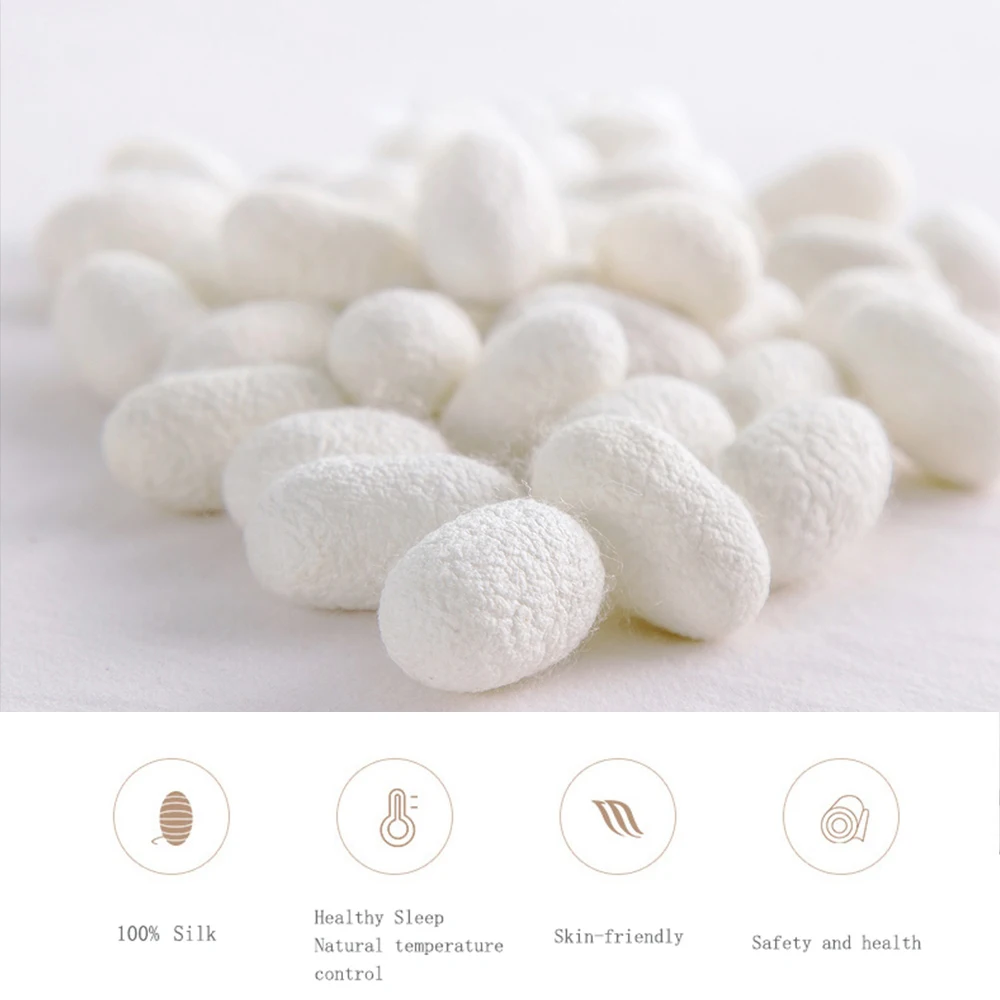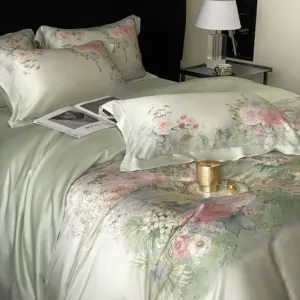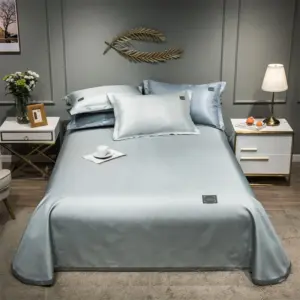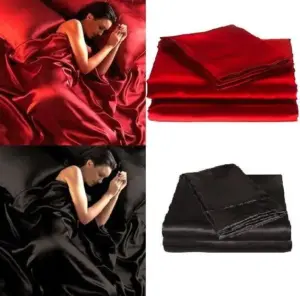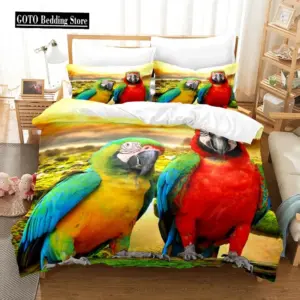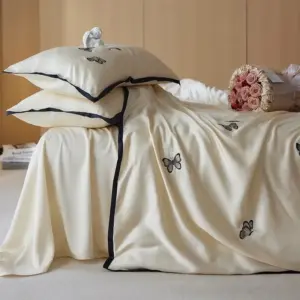What is Plant-Based Silk?
Plant-based silk refers to textile alternatives that mimic the luxurious properties of traditional silk but are made from plant sources instead of silkworm cocoons. Unlike true silk, which is a protein fiber produced by silkworms, plant-based silks are primarily cellulose-based materials engineered to achieve similar properties like softness, drape, and sheen.
Definition: Plant-based silk is a category of textiles derived from plant fibers or cellulose that has been processed to mimic the aesthetic and performance characteristics of traditional silk without using animal products.
These innovative textiles have emerged as part of the sustainable fashion movement, offering consumers ethical alternatives that don’t compromise on luxury. Most plant-based silks fall into three main categories:
- Regenerated cellulose fibers – Plant cellulose chemically processed into smooth fibers
- Natural plant fibers – Minimally processed fibers with inherent silk-like qualities
- Bioengineered options – Laboratory-created protein fibers that mimic actual silk proteins
When considering quality bedding options, understanding the amazing benefits of Mulberry silk sheets can help you better appreciate what plant-based alternatives aim to replicate.
Why Seek Alternatives to Traditional Silk?
Many consumers are turning to plant-based silk alternatives for several compelling reasons:
Ethical Concerns
Traditional silk production involves cultivating silkworms specifically to harvest their cocoons. This process typically requires boiling the cocoons while the silkworm is still inside, killing the developing moth. For each pound of silk produced, approximately 2,500 silkworms are used, raising significant animal welfare concerns for those seeking cruelty-free options.
Environmental Considerations
While traditional silk is a natural fiber, its production can involve substantial water usage, chemical treatments for processing and dyeing, and intensive land use for mulberry cultivation. Plant-based alternatives often utilize agricultural byproducts or fast-growing renewable resources.
Accessibility and Cost
Traditional silk is positioned as a luxury material with corresponding prices. Many plant-based alternatives offer similar properties at more accessible price points, democratizing access to silk-like textiles.
The growing demand for vegan alternatives to Mulberry silk demonstrates how consumer preferences are evolving toward more ethical luxury options.
Types of Plant-Based Silk: Exploring the Materials
Plant-based silk alternatives encompass a diverse range of materials, each with unique properties and production methods. These alternatives generally fall into three categories: regenerated cellulose fibers (the most common commercially), natural plant fibers (often more artisanal), and innovative bioengineered options (representing cutting-edge textile technology).
As the market continues to evolve, new materials and production methods are constantly being developed, expanding the options available to conscious consumers interested in how vegan silk is made.
Regenerated Cellulose Fibers: The Most Common Silk Alternatives
Regenerated cellulose fibers dominate the plant-based silk market due to their commercial viability and ability to closely mimic traditional silk’s properties. These materials start as plant cellulose that undergoes chemical processing to create smooth, continuous fibers.
The resulting fabrics offer excellent drape, softness, and a silk-like sheen, making them popular choices for our vegan silk bedding collections.
| Fiber Type | Primary Source | Sheen Level | Breathability | Environmental Impact |
|---|---|---|---|---|
| Tencel/Lyocell | Eucalyptus | High | Excellent | Low (closed-loop) |
| Modal | Beech wood | Medium-high | Very good | Medium-low |
| Cupro | Cotton linter | High | Good | Medium |
| Viscose/Rayon | Various wood pulp | Medium-high | Good | Medium-high |
| Bamboo Lyocell | Bamboo | Medium | Excellent | Low (closed-loop) |
Tencel Lyocell (from Eucalyptus and Other Wood Pulps)
Tencel is a branded lyocell fiber primarily derived from eucalyptus trees, though other wood sources can be used. It has become one of the premium options in the plant-based silk market due to its excellent performance characteristics and sustainability credentials.
The fabric features a smooth surface, exceptional drape, and natural sheen that closely resembles silk. Its moisture management properties often exceed traditional silk, making it an excellent choice for bedding.
Production Method: The Closed-Loop Process
Tencel’s production uses a closed-loop process that recycles water and reuses the solvent (NMMO – N-Methylmorpholine N-oxide) with over 99% recovery rate:
- Wood pulp is dissolved in the NMMO solvent
- The solution is pushed through spinnerets to form fibers
- Fibers are washed, and the solvent is recovered
- Fibers are dried and spun into yarns
This efficient system significantly reduces environmental impact compared to traditional viscose production methods, using less water and energy while minimizing chemical waste.
Key Characteristics and Benefits
- Silk-like luster with exceptional drape
- Superior moisture management (50% more absorbent than cotton)
- Excellent breathability and natural temperature regulation
- Fully biodegradable within weeks in appropriate conditions
- Hypoallergenic properties, ideal for sensitive skin
- OEKO-TEX certified, ensuring no harmful chemicals
Our eucalyptus silk sheets showcase these properties, offering a luxurious sleep experience with sustainable credentials.
Modal (from Beech Wood)
Modal is a specific type of rayon primarily made from beech wood pulp. It offers extraordinary softness combined with excellent drape, making it a popular choice for luxurious clothing and bedding.
Developed and primarily manufactured by Lenzing AG (the same company that produces Tencel), Modal is positioned as a softer alternative with excellent durability for frequent washing.
Production Method
Modal production uses a modified viscose process with specific improvements that reduce environmental impact:
- Beech wood pulp is treated with sodium hydroxide
- The resulting alkali cellulose is processed with carbon disulfide
- This creates cellulose xanthate, which is dissolved in sodium hydroxide
- The solution is filtered and extruded through spinnerets
- The resulting fibers are drawn, washed, and treated
While more environmentally friendly than standard viscose, Modal production isn’t as closed-loop as Tencel lyocell.
Key Characteristics
- Exceptional softness that often surpasses cotton and sometimes silk
- Natural silky sheen and fluid drape
- Remarkable resistance to shrinkage, stretching, and fading
- 50% stronger when wet than dry (unlike many fibers)
- Excellent moisture-wicking capabilities
- Pill-resistant surface retains smooth appearance over time
The differences between silk and vegan silk include Modal’s superior washability and durability, making it more practical for everyday use.
Cupro (from Cotton Linter)
Cupro offers a unique story among plant-based silk alternatives as it’s derived from cotton linter – the short, fuzzy fibers that adhere to cotton seeds after ginning. Essentially transforming a cotton industry byproduct into a luxury textile.
This fabric has exceptional drape and a cooling sensation against the skin, making it popular for linings and lightweight garments. Its unique source material sets it apart from wood-derived alternatives.
Production Method
Cupro production uses the cuprammonium process:
- Cotton linters are dissolved in a solution of copper and ammonia
- The solution is filtered and extruded through spinnerets
- The resulting filaments are stretched and washed
- Chemical baths help regenerate the cellulose structure
This process requires careful chemical management, though it effectively utilizes what would otherwise be a waste product.
Key Characteristics
- Exceptional drape and flow similar to silk charmeuse
- Cooling sensation against skin, ideal for warm weather
- Anti-static properties prevent clinging
- High color absorption for vibrant, long-lasting dyes
- Smooth, silk-like surface texture
- Breathable yet moisture-wicking properties
Our eucalyptus silk bedding sets often incorporate Cupro for its cooling properties and exceptional drape.
Viscose/Rayon (General Wood Pulp Source)
Viscose (often called rayon in North America) was the first commercially produced regenerated cellulose fiber and remains the most common. Unlike the more specialized fibers above, standard viscose uses various wood pulp sources rather than specific species.
While ubiquitous in the textile market, conventional viscose production raises significant environmental concerns due to chemical-intensive processing. However, newer eco-friendly variants are improving sustainability.
Production Method and Environmental Considerations
Traditional viscose production involves:
- Wood pulp is treated with sodium hydroxide (caustic soda)
- The resulting alkali cellulose is treated with carbon disulfide
- This creates cellulose xanthate, which is dissolved in more sodium hydroxide
- The solution is filtered and pushed through spinnerets into an acid bath
- The acid regenerates the cellulose into fiber form
Environmental challenges include high water usage, energy consumption, and hazardous chemicals like carbon disulfide. Newer alternatives like ECOVERO by Lenzing use more sustainable processes with lower environmental impact.
Key Characteristics
- Silk-like appearance with excellent versatility
- Smooth drape and flow in garments
- Vibrant color absorption and retention
- Good moisture absorbency and comfort
- Variable durability depending on quality and production method
- Soft hand-feel similar to silk or cotton
The complete guide to Mulberry silk bed sheets offers context for comparing viscose properties to traditional silk.
Bamboo Viscose vs. Bamboo Lyocell
A critical distinction exists between bamboo-derived fabrics based on their processing method, not just their source material. Many products labeled simply as “bamboo” are actually bamboo viscose, using the chemical-intensive process described above.
In contrast, bamboo lyocell uses the more environmentally friendly closed-loop system similar to Tencel. This distinction is important for consumers seeking truly sustainable options when comparing bamboo alternatives to traditional silk.
Production Differences
The key differences in production:
- Bamboo Viscose: Uses the chemical-intensive viscose process with sodium hydroxide and carbon disulfide, with limited chemical recovery
- Bamboo Lyocell: Uses the closed-loop NMMO solvent process with 99%+ solvent recovery and significantly reduced water usage
The environmental impact difference is substantial, with bamboo lyocell generating less pollution and using fewer resources.
Key Characteristics
Bamboo Viscose:
* Very soft and silky texture
* Less expensive
* Moderate durability
* Variable environmental impact
Bamboo Lyocell:
* Premium quality with consistent properties
* Better strength and durability
* More sustainable production
* Higher price reflecting better production standards
Our bamboo silk bedding sets showcase the luxury of properly produced bamboo-derived fabrics.
Natural Plant Fibers Mimicking Silk
Unlike regenerated cellulose fibers that undergo significant chemical processing, natural plant fibers maintain more of their inherent structure while still achieving silk-like qualities. These options are typically more artisanal, limited in production, and command higher prices for their unique properties and traditional craftsmanship.
The minimal processing of these fibers often results in exceptional sustainability credentials, though limited scale makes them less commercially available than regenerated options.
Lotus Silk
Lotus silk is one of the world’s rarest and most expensive textiles, primarily produced in Cambodia and Myanmar. This extraordinary fabric is created from the filaments extracted from lotus stems, requiring extreme labor intensity and specialized traditional knowledge.
With prices ranging from $200-400 per yard, lotus silk represents the pinnacle of sustainable luxury, with production so limited that it remains primarily in the realm of high-end artisanal textiles.
Origin and Traditional Craftsmanship
The production process is entirely manual and requires extraordinary skill:
- Lotus stems are harvested from lakes and ponds
- Within hours, stems must be broken and fine filaments carefully extracted by hand
- These filaments are rolled together to form threads
- Threads are washed, dried, and hand-spun
- The resulting yarn is hand-woven into fabric
The labor requirements are staggering – producing a single scarf requires filaments from approximately 35,000 lotus stems, with production limited to specific lakes in Southeast Asia.
Unique Properties
- Naturally cream-colored with a subtle, organic sheen
- Incredibly lightweight yet with surprising strength
- Excellent temperature regulation in various climates
- Cultural significance as a sacred fiber in Buddhism
- Exceptional breathability and moisture management
- Completely biodegradable and chemical-free
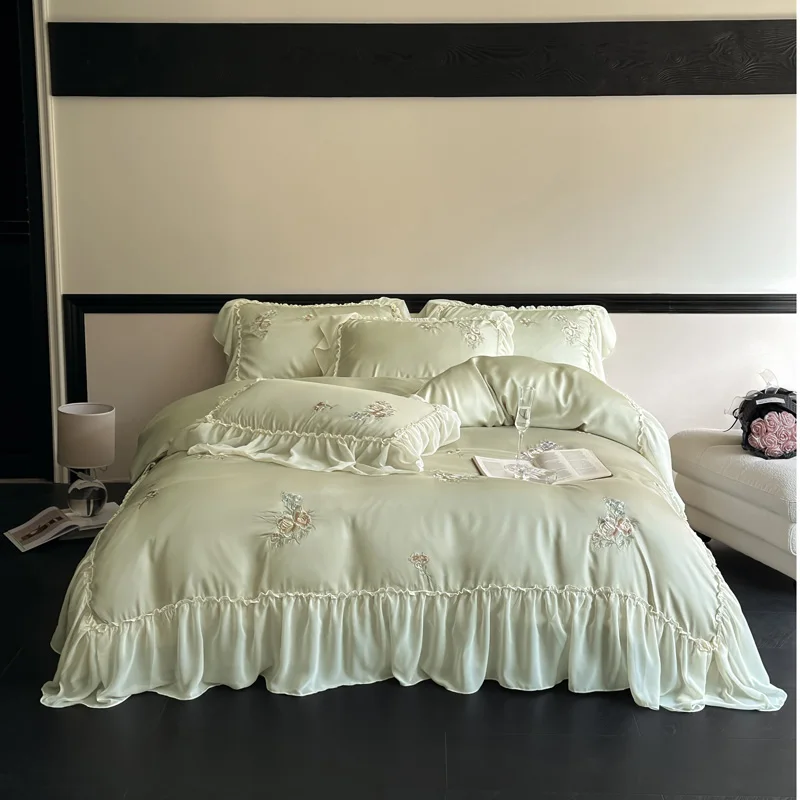
Banana Silk
Banana silk represents a sustainable innovation utilizing agricultural waste from banana cultivation. Made from the stalks of banana plants after fruit harvest, this fiber transforms what would be discarded material into luxurious textiles with a natural golden sheen.
Unlike lotus silk, banana fiber production has expanded beyond purely artisanal methods, with semi-industrial processing emerging in regions like India, Nepal, and the Philippines, making it more widely available though still specialized.
Comparing different textile options helps consumers understand where banana fiber fits among Mulberry silk alternatives.
Source and Production Process
Banana silk production varies from traditional to semi-mechanized:
- Banana plant stems are harvested after fruit collection
- Outer sheaths are removed to access fibrous layers
- Fibers are extracted either manually or with mechanical decorticators
- Extracted fibers are washed, dried, and sometimes softened with natural treatments
- Fibers are spun into yarns of varying fineness
Using agricultural byproducts that would otherwise be wasted makes banana silk highly sustainable, requiring no additional land, water, or pesticides beyond what’s used for fruit production.
Characteristics
- Natural golden sheen reminiscent of raw silk
- Lightweight with excellent drape for a plant fiber
- Exceptional strength and abrasion resistance
- Fully biodegradable and chemical-free
- Variations in texture depending on processing
- Slightly coarser than animal silk but softer with each wash
Orange Fiber (from Citrus Byproducts)
Orange Fiber represents an innovative Italian technology that creates silk-like fabric from the byproducts of citrus juice production. Developed by Adriana Santanocito and Enrica Arena, this material transforms what would be waste into luxury textiles.
The innovation has attracted attention from major fashion houses like Salvatore Ferragamo, highlighting the potential for food industry waste to become valuable textile resources.
Sustainable Sourcing
The process transforms citrus waste into valuable textiles:
- Citrus juicing byproducts (peels, pulp) are collected from juice production
- Cellulose is extracted through patented processes
- The cellulose undergoes spinning similar to other regenerated fibers
- The resulting yarn can be blended or used pure for different applications
With Italy alone producing over 700,000 tons of citrus waste annually, this innovation represents significant potential for circular economy principles in action.
Properties as Fabric
- Silky hand-feel with lightweight drape
- Natural citrus essence may remain in the fabric
- Good breathability and moisture management
- Fully biodegradable within industrial composting
- Currently limited in scale and availability
- Blends well with other natural fibers
Pineapple Fiber (Piñatex for Fabric Applications)
While primarily known as a leather alternative, pineapple leaf fiber can also create silk-like textiles. Developed by Dr. Carmen Hijosa through her company Ananas Anam, this innovative material utilizes the leaves of pineapple plants, which are normally discarded after fruit harvest.
The versatility of pineapple fiber allows for both leather-like materials and lighter, more fluid textiles depending on processing methods, showcasing the adaptability of this agricultural byproduct.
Our bamboo silk sheets offer another plant-based alternative with similar sustainability credentials.
Source and Processing
Pineapple fiber utilizes abundant agricultural waste:
- Pineapple leaves are collected after fruit harvest
- Fibers are extracted through a process called decortication
- The resulting fibers can be processed into different forms
- For textile applications, fibers undergo softening treatments
- The processed fibers are spun into yarns for weaving
The scale potential is impressive – leaves from one hectare of pineapple cultivation can produce approximately 10,000 square meters of Piñatex material.
Characteristics
- Can range from leather-like to silk-like depending on processing
- Lightweight and breathable when processed for textiles
- Strong and durable with good tensile strength
- Natural antimicrobial properties
- Biodegradable at end of life
- Currently more common in leather alternatives than silk-like textiles
Soy Silk
Soy silk offers a unique position among plant-based silk alternatives as it’s derived from protein rather than cellulose, making it chemically closer to animal silk. Created from the liquid residue of tofu and soy food production, it represents another innovative approach to byproduct utilization.
First developed in the 1940s and revived in recent decades, soy silk combines protein-based structure with plant origins for a distinctive alternative to animal silk.
Source and Production
Soy silk transforms food production byproducts:
- Liquid residue from tofu/soy food production is collected
- Proteins are extracted and purified
- The protein solution undergoes wet spinning similar to regenerated fibers
- The resulting filaments are treated to improve properties
- These are then spun into yarns for textile creation
This process effectively utilizes what would otherwise be a low-value byproduct of the food industry, enhancing overall resource efficiency.
Characteristics
- Exceptionally soft hand-feel often compared to silk/cashmere blend
- Natural protein base contains amino acids beneficial for skin
- Good moisture absorption and temperature regulation
- Biodegradable under appropriate conditions
- Less durable than some alternatives with potential for color fading
- Often blended with other fibers to enhance performance
Hemp Silk
Hemp silk refers to specially processed hemp fibers that achieve a more refined, silk-like quality than standard hemp textiles, which tend to be sturdy but coarse. With a history dating back thousands of years, hemp has reemerged as a sustainable fiber crop with modern processing innovations enhancing its versatility.
The transformation from traditional coarse hemp to silk-like textiles demonstrates how processing innovations can dramatically alter a fiber’s properties and applications.
When considering textile options, many consumers evaluate why they might choose Mulberry silk sheets versus plant-based alternatives like hemp silk.
Source and Textile Potential
Hemp offers exceptional cultivation benefits:
- Requires minimal water, pesticides, and fertilizers
- Grows rapidly (120 days from seed to harvest)
- Yields more fiber per acre than cotton
- Naturally resistant to most pests and diseases
- Improves soil health through phytoremediation
Modern processing techniques can extract finer fibers and remove lignin (the “glue” holding fibers together) to achieve softer, more flowing textiles than traditional hemp.
Characteristics
- Natural luster and drape when properly processed
- Exceptional durability with 3-8 times the tensile strength of cotton
- Natural antimicrobial and hypoallergenic properties
- Superior insulation while maintaining breathability
- Improves with washing, becoming softer over time
- Can be challenging to achieve consistent silk-like finish
Ramie Silk
Ramie is one of the oldest known fiber crops, derived from flowering plants in the nettle family. With a history spanning over 6,000 years in China, ramie naturally possesses silk-like luster without chemical processing, making it a unique option among plant fibers.
Growing interest in this traditional fiber has sparked innovations in processing to overcome its historical challenges while capitalizing on its inherent strengths.
Source and Textile Properties
Ramie cultivation and processing have both challenges and benefits:
- Plants grow quickly and can be harvested multiple times yearly
- Fiber extraction traditionally requires complex processes to remove gums and pectins
- Modern enzymatic methods are improving processing efficiency
- The resulting fiber is naturally white with silk-like luster
The fiber’s inherent strength and luster make it valuable despite processing challenges, particularly as technology improves extraction methods.
Characteristics
- Natural silky luster without chemical treatments
- Exceptional strength (8 times stronger than cotton)
- Superior moisture wicking and quick-drying properties
- Excellent dimensional stability with minimal shrinkage
- Limited elasticity compared to other fibers
- Holds dye well with vibrant color retention
Innovative Bioengineered Silks
The frontier of sustainable textile innovation includes laboratory-created protein fibers that actually mimic the chemical structure of silk protein rather than just its aesthetic properties. Unlike both traditional silk and plant-based cellulose alternatives, these materials represent true biomimicry of silk proteins.
While currently limited in commercial availability and often commanding premium prices, these innovations represent the potential future of ethical silk production with properties potentially exceeding both traditional silk and current plant-based alternatives.
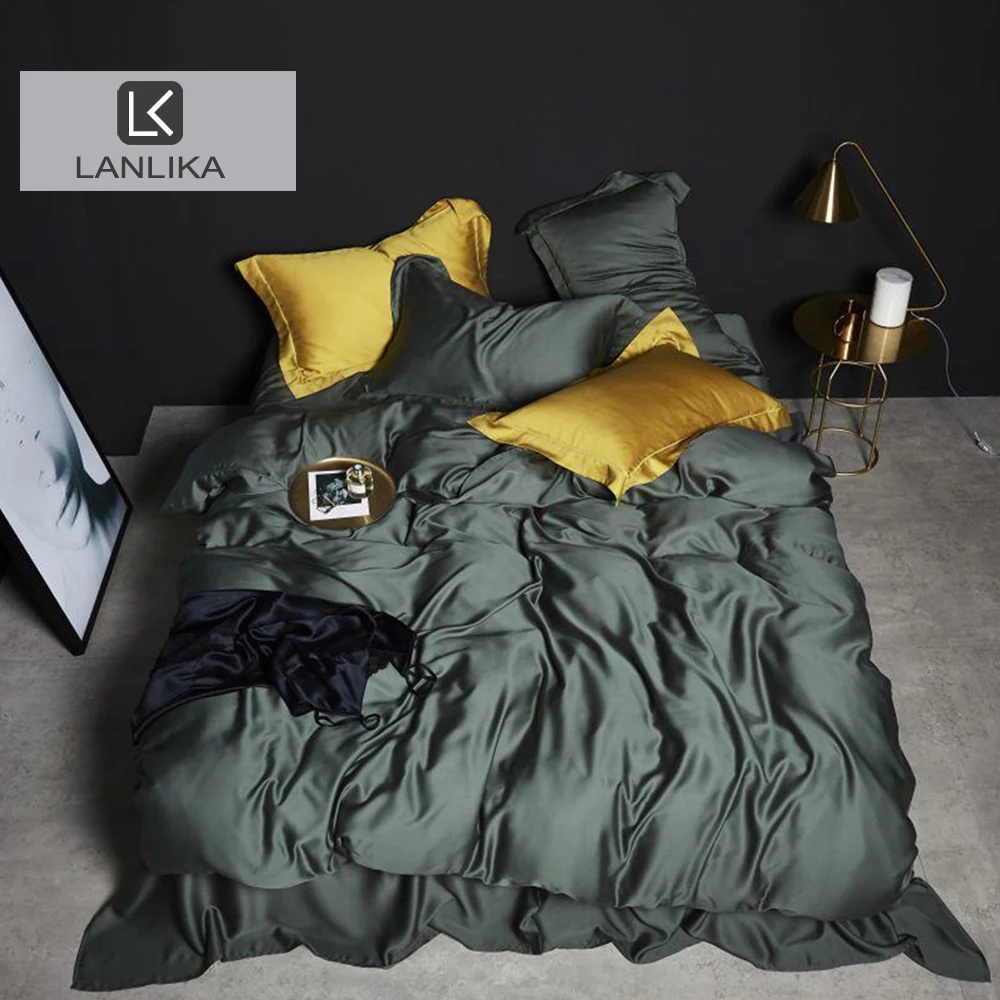
Microsilk (Fermentation-Based Protein Fiber)
Developed by biotechnology company Bolt Threads, Microsilk represents a revolutionary approach to silk production using bioengineered yeast to produce actual silk proteins without silkworms. This technology creates programmable proteins that can be tuned for specific performance characteristics.
Currently produced in limited quantities and used in high-end collaborations with designers like Stella McCartney, Microsilk represents the cutting edge of sustainable luxury textiles.
How it’s Engineered
Microsilk production mimics natural silk protein creation:
- Genes responsible for silk protein production are identified
- These genes are inserted into yeast cells
- The modified yeast ferments sugar, producing silk proteins
- Proteins are extracted and purified
- The resulting proteins are spun into fibers similar to spider silk
This process allows for protein customization impossible in nature, potentially creating silks with enhanced properties beyond what silkworms can produce.
Future Potential and Properties
- Properties matching or exceeding natural silk in strength and elasticity
- Potential for customized performance characteristics through protein engineering
- Fully biodegradable at end of life
- Water and resource efficiency compared to traditional silk
- Currently limited by production scale and high costs
- Projected wider availability in next 5-10 years as technology scales
How Plant-Based Silk is Made: A General Overview
Despite their diverse origins, most plant-based silk alternatives follow a similar general production pathway, with variations depending on specific material and processing method. Understanding these processes helps consumers evaluate the environmental impact and quality of different options.
The production typically involves three main phases: raw material extraction, fiber formation, and textile creation. Each stage presents opportunities for sustainable innovations or environmental challenges depending on the methods used.
From Plant Material to Cellulose Pulp Extraction
The journey begins with obtaining cellulose from plant sources:
Wood-based sources (eucalyptus, beech, bamboo): Trees are harvested and processed into wood chips, then pulped using either chemical or mechanical methods to separate cellulose from lignin and other components.
Agricultural byproducts (cotton linters, citrus waste, banana stems): These materials undergo specialized extraction processes specific to their structure to isolate usable cellulose or protein.
Dedicated fiber crops (hemp, ramie): Plants are harvested, retted (decomposed to separate fibers), and mechanically processed to extract fibers.
Environmental considerations at this stage include:
– Land use efficiency and competition with food crops
– Water consumption during cultivation
– Chemical usage in pulping processes
– Energy requirements for mechanical processing
Fiber Regeneration Processes
Once basic cellulose is extracted, most plant-based silks undergo fiber regeneration:
| Process Type | Key Chemicals | Water Usage | Solvent Recovery | Environmental Impact |
|---|---|---|---|---|
| Viscose/Rayon | Sodium hydroxide, Carbon disulfide | High | Limited | Higher |
| Lyocell | NMMO solvent | Moderate | 99%+ | Lower |
| Cuprammonium | Copper, Ammonia | High | Partial | Medium |
| Direct Spinning | Minimal chemicals | Variable | N/A | Lower |
The lyocell process (used for Tencel and some bamboo) represents the most significant advancement in sustainable fiber regeneration, with its closed-loop system recovering over 99% of solvents.
Sustainable Practices in Manufacturing
Leading manufacturers have implemented significant sustainability innovations:
Closed-loop production systems recapture and reuse chemicals, minimizing waste and pollution while reducing resource consumption.
Water reclamation technologies filter and purify process water for reuse, reducing freshwater demand by up to 95% in advanced systems.
Energy efficiency improvements include heat recovery systems, renewable energy integration, and optimized production sequences.
Chemical management practices substitute hazardous substances with safer alternatives and ensure proper treatment of any remaining waste.
Certifications like OEKO-TEX Standard 100, Global Organic Textile Standard (GOTS), and Cradle to Cradle verify sustainable manufacturing practices for conscientious consumers.
Key Benefits and Advantages of Choosing Plant-Based Silk
Plant-based silk alternatives offer multifaceted benefits across ethical, environmental, and functional dimensions. While each alternative has its specific strengths, they generally share advantages that appeal to conscious consumers seeking sustainable luxury.
Eucalyptus Silk Bedding Sets, Eucalyptus Silk Sheets
Price range: $360.24 through $393.60 Select options This product has multiple variants. The options may be chosen on the product page- Price range: $267.82 through $306.55 Select options This product has multiple variants. The options may be chosen on the product page
Bamboo Silk Sheets, Cooling Silk Sheets
Price range: $130.76 through $177.80 Select options This product has multiple variants. The options may be chosen on the product pageBamboo Silk Sheets, Queen Size Silk Fitted Sheet
Price range: $230.24 through $297.88 Select options This product has multiple variants. The options may be chosen on the product page- 100% Bamboo Fiber Parrot Duvet Cover Set – Queen King Twin Size Tropical Bedding for Comfort & StylePrice range: $241.95 through $380.95 Select options This product has multiple variants. The options may be chosen on the product page
Bamboo Silk Bedding Sets, Bamboo Silk Sheets, King Size Silk Pillowcases, Queen Size Silk Pillowcases
Price range: $376.20 through $402.27 Select options This product has multiple variants. The options may be chosen on the product page
Ethical and Cruelty-Free Aspects
The primary ethical advantage of plant-based silk is eliminating animal exploitation from the production process. Traditional silk production requires boiling silkworm cocoons with the pupae inside, killing billions of silkworms annually in the global silk industry.
For consumers with vegan values or concerns about animal welfare, plant-based alternatives provide luxury textiles aligned with ethical principles. Various vegan certification standards verify animal-free production, ensuring consumers can make confident choices.
Beyond animal welfare, many plant-based alternatives also support ethical human labor practices through fair trade certification and transparent supply chains, adding another dimension to their ethical appeal.
Environmental Sustainability
While plant-based alternatives aren’t automatically sustainable simply by being plant-derived, many offer significant environmental advantages over both traditional silk and petroleum-based synthetics when properly produced.
Renewable Resource Base
Plant-based silks derive from renewable resources that can be replenished within human timeframes, unlike petroleum-based synthetics:
- Fast-growing trees like eucalyptus can be harvested from managed plantations in 6-8 years
- Bamboo can grow up to 3 feet daily and be harvested in 3-5 years
- Agricultural byproduct sources (orange peels, banana stems) require no additional land or resources beyond food production
This renewable foundation provides long-term resource security compared to finite fossil fuel-based alternatives.
Reduced Water and Energy Consumption
Many plant-based alternatives offer substantial resource savings:
- Lyocell production uses up to 95% less water than conventional cotton
- Fibers from agricultural byproducts avoid additional irrigation requirements
- Closed-loop systems significantly reduce both water and energy demands
- Hemp and bamboo typically require minimal irrigation compared to conventional fiber crops
However, some regenerated cellulose processes (particularly conventional viscose) can be water and energy-intensive, highlighting the importance of production method beyond just material source.
Biodegradability and Lower Carbon Footprint
Unlike synthetic alternatives like polyester that persist for centuries, plant-based silks offer end-of-life advantages:
- Most plant-based silks biodegrade completely within 3-6 months in industrial composting
- Some options like lotus and hemp silk will decompose even in home composting conditions
- Carbon sequestration during plant growth can partially offset production emissions
- Reduced transportation emissions for locally processed agricultural byproducts
These characteristics help reduce the long-term environmental footprint of textile consumption.
Minimal Pesticide Use
Many plant sources for alternative silks require fewer agricultural chemicals:
- Bamboo typically grows without pesticides or fertilizers
- Eucalyptus plantations for Tencel often use minimal chemical inputs
- Hemp naturally suppresses weeds and resists most pests
- Byproduct sources inherit the cultivation profile of their food crops
Certifications like GOTS (Global Organic Textile Standard) and OEKO-TEX verify reduced chemical use throughout production.
Functional and Aesthetic Qualities
Beyond ethical and environmental benefits, plant-based silks offer functional advantages that make them desirable purely on performance merits.
Luxurious Softness and Drape
Many plant-based alternatives achieve remarkable tactile qualities:
- Tencel/Lyocell offers smoothness comparable to the finest silks
- Modal provides exceptional softness often exceeding traditional silk
- Cupro achieves fluid drape nearly indistinguishable from silk charmeuse
- Properly processed hemp and ramie silks develop increasing softness with each wash
While subtle differences exist between alternatives, many consumers find the sensory experience equals or exceeds traditional silk.
Superior Breathability and Temperature Regulation
Plant-based silks excel in comfort across different conditions:
- Lyocell fibers efficiently transport moisture away from the body
- Bamboo-derived fabrics offer excellent ventilation through micro-gaps in fiber structure
- Hemp silk provides warming insulation in cold conditions while remaining breathable
- Most alternatives adapt to body temperature, feeling cool in summer and warm in winter
These properties make plant-based silks particularly valuable for bedding, where temperature regulation affects sleep quality.
Hypoallergenic and Gentle on Skin/Hair
For sensitive individuals, plant-based alternatives offer significant advantages:
- Most plant-based silks are naturally hypoallergenic
- Absence of animal proteins eliminates related allergic reactions
- Smooth fiber surfaces reduce friction on skin and hair
- Moisture management prevents bacterial growth that can irritate sensitive skin
These properties make plant-based silks excellent choices for those with sensitivities to traditional textiles.
Moisture-Wicking Properties
Efficient moisture management enhances comfort in many situations:
- Lyocell can absorb up to 50% more moisture than cotton while feeling dry
- Bamboo-derived fabrics rapidly transport moisture from skin to outer surface for evaporation
- Hemp silk naturally regulates humidity levels near the body
- Ramie exceeds most fibers in quick-drying capability
This moisture control helps maintain comfortable sleep temperatures and prevents the clammy feeling sometimes experienced with less breathable fabrics.
Durability and Resilience
Many plant-based alternatives offer practical durability advantages:
- Most regenerated cellulose fibers maintain strength when wet (unlike traditional silk)
- Hemp and ramie silks offer exceptional tensile strength and abrasion resistance
- Many alternatives can be machine washed on gentle cycles (traditional silk typically requires dry cleaning)
- Proper care can extend lifespan for many years of use
These durability factors often make plant-based alternatives more practical for everyday use than traditional silk.
Excellent Dye Absorption and Color Retention
Visual aesthetics benefit from how plant-based fibers interact with dyes:
- Most regenerated cellulose fibers absorb dye evenly and vibrantly
- Cupro achieves exceptional color depth and richness
- Plant-based fibers are compatible with low-impact and natural dyes
- Many alternatives maintain color vibrancy through multiple washings
These properties allow for stunning visual aesthetics across a range of color palettes.
Plant-Based Silk vs. Traditional Silk: A Detailed Comparison
When choosing between traditional silk and plant-based alternatives, consumers should consider multiple factors beyond just ethical concerns. This comprehensive comparison helps identify which option best matches individual priorities.
| Factor | Traditional Silk | Plant-Based Alternatives |
|---|---|---|
| Origin | Silkworm cocoons | Various plant sources |
| Production | Boiling cocoons with silkworms inside | Chemical or mechanical processing of plant materials |
| Water Usage | Moderate to high | Varies (low for closed-loop, high for conventional viscose) |
| Chemical Usage | Moderate | Varies (low to high depending on process) |
| Animal Impact | High (silkworms killed) | None |
| Biodegradability | Good (1-3 years) | Good to excellent (3-6 months) |
| Softness | Excellent | Good to excellent (varies by type) |
| Durability | Moderate, weakens when wet | Moderate to excellent, often stronger wet |
| Care Required | Delicate, often dry clean | Often machine washable on gentle |
| Cost | Higher | Moderate to high (varies by type) |
Origin and Production Processes
Traditional silk involves cultivating silkworms (Bombyx mori) specifically to harvest their cocoons. After the silkworms spin their cocoons, these are typically boiled with the pupae inside to prevent emergence, which would break the continuous silk filament.
In contrast, plant-based alternatives utilize various botanical sources and processing methods. Regenerated cellulose options chemically dissolve and reconstitute plant cellulose, while natural plant fibers use mechanical processing to extract and refine inherent fibers.
The production complexity varies significantly, with some alternatives (like lotus silk) requiring even more labor than traditional silk, while others utilize industrial-scale processing that enables greater production volume.
Environmental Impact Assessment
Environmental impact varies widely among both traditional silk and plant-based alternatives:
Traditional silk requires mulberry leaf cultivation, silkworm raising, and processing that consumes water and energy. While biodegradable, it has a moderate ecological footprint due to agricultural inputs and processing requirements.
Plant-based alternatives range from extremely low impact (lotus silk, agricultural byproducts) to potentially higher impact (conventional viscose). The most sustainable options utilize closed-loop processing, agricultural waste, or minimal-input fiber crops.
The environmental winner depends on specific priorities and production methods, with closed-loop lyocell, agricultural byproduct fibers, and minimally processed natural fibers generally offering the best environmental profiles.
Ethical Considerations
Ethical considerations extend beyond animal welfare:
Traditional silk production kills silkworms, raising animal welfare concerns for those following vegan principles. However, silk production also supports traditional artisans and cultural heritage in many regions.
Plant-based alternatives eliminate animal exploitation but raise different ethical questions regarding chemical usage, labor practices in production, and land use. The best options support fair labor practices and responsible resource management throughout their supply chains.
Both options have complex ethical dimensions that consumers must weigh according to their values.
Feel, Texture, and Luster
Sensory qualities show both similarities and differences:
Traditional silk offers a distinctive cool-to-touch initial feel, warming to body temperature, with unmatchable natural sheen and a subtle “crinkling” sound known as “scroop.”
Plant-based alternatives vary in their sensory profiles. Cupro and Tencel achieve very similar drape and luster to silk charmeuse. Modal offers exceptional softness but slightly less sheen. Natural plant fibers like ramie have inherent luster but often a slightly more textured hand-feel.
For those seeking the closest sensory match to traditional silk, premium lyocell, cupro, and well-processed ramie offer the most similar experiences.
Durability and Lifespan
Durability considerations often favor plant-based alternatives:
Traditional silk, while luxurious, has specific vulnerabilities. It weakens when wet, can be damaged by perspiration, and degrades with UV exposure over time. Proper care can extend its life, but it remains relatively delicate.
Many plant-based alternatives offer superior practical durability. Most maintain or increase strength when wet, resist abrasion better, and withstand more frequent washing. Hemp and ramie silks are particularly renowned for longevity.
For everyday use items that will undergo frequent washing, plant-based alternatives often provide better value over time despite potential higher initial costs for premium options.
Care and Maintenance Guidelines
Care requirements significantly differ:
Traditional silk typically requires dry cleaning or very gentle hand washing with special silk detergents, no wringing, air drying away from direct sunlight, and careful ironing at low temperatures.
Most plant-based alternatives can be machine washed on gentle cycles with mild detergent, air dried or tumble dried on low, and require less careful ironing. This easier maintenance represents a significant practical advantage for many consumers.
The simpler care requirements of plant-based silks make them more practical for everyday items and reduce the lifetime environmental impact of cleaning and maintenance.
Cost Comparison
Price positioning varies across the spectrum:
Traditional silk ranges from moderate to very expensive depending on quality (momme weight) and production methods, with hand-reeled silk commanding premium prices.
Plant-based alternatives span from affordable (standard viscose) to extremely expensive (lotus silk). Premium options like Tencel and Orange Fiber typically cost less than high-quality silk but more than conventional fabrics. Artisanal options like lotus silk exceed even the finest traditional silks in price.
Value assessment should consider not just initial cost but durability, care requirements, and alignment with personal values for the most satisfying long-term investment.
Addressing Common Misconceptions: What Plant-Based Silk is NOT
As plant-based silk alternatives gain popularity, several misconceptions have emerged that can confuse consumers. Understanding what these materials are not helps make informed purchasing decisions.
Marketing terms often blur distinctions between fundamentally different materials, particularly when terms like “vegan silk” encompass both plant-derived and petroleum-based synthetic options.
Clarifying the Biological Definition of Silk
Biological Definition: True silk is specifically a protein fiber produced by certain insects, particularly the Bombyx mori silkworm, consisting of fibroin protein bound by sericin.
Plant-based “silks” are not biologically silk – they don’t contain the specific proteins that define true silk. Rather, they are materials processed to mimic silk’s aesthetic and performance properties while originating from plant cellulose or proteins.
This distinction isn’t merely semantic – it explains why even the best plant-based alternatives cannot perfectly replicate all properties of biological silk, as they have fundamentally different chemical structures.
Distinguishing from Petroleum-Based Synthetics
Plant-based silk alternatives should not be confused with petroleum-derived synthetic “silk-like” fabrics such as polyester satin, nylon, or acetate. These materials are fundamentally different in:
- Source material: Plant-based options derive from renewable botanical sources; synthetics come from non-renewable fossil fuels
- Biodegradability: Most plant-based options biodegrade within months; petroleum synthetics persist for centuries
- Breathability: Plant-based options typically offer superior moisture management and breathability
- Environmental impact: Plant-based options generally have lower carbon footprints and reduced pollution throughout their lifecycle
While both can mimic silk’s appearance, their environmental profiles and performance characteristics differ substantially.
The Broader Term “Vegan Silk” and Its Ambiguities
“Vegan silk” is a broad marketing term encompassing any silk alternative not derived from animals, including both plant-based options and petroleum-derived synthetics.
This ambiguity can create confusion, as a polyester satin labeled “vegan silk” offers very different properties and environmental impacts than Tencel lyocell or banana fiber similarly labeled.
When evaluating “vegan silk” products, consumers should specifically identify:
* The actual material composition (not just “vegan silk”)
* The specific source of the fiber (plant species or synthetic base)
* The processing method used (especially for regenerated cellulose)
* Relevant certifications verifying environmental or ethical claims
This detailed information provides the transparency needed for truly informed choices aligned with individual values.
Common Applications and Uses of Plant-Based Silk
Plant-based silk alternatives have found applications across numerous product categories, with different materials excelling in specific uses based on their particular properties and characteristics.
Apparel and Fashion
- Flowing garments like dresses, blouses, and scarves benefit from the exceptional drape of cupro, Tencel, and Modal
- Lingerie and intimate apparel utilize the softness and breathability of Modal and bamboo lyocell
- Formal and eveningwear showcase the lustrous sheen of premium regenerated fibers like cupro
- Activewear incorporates moisture-wicking plant-based options for comfort during exercise
- Lightweight summer clothing benefits from the cooling properties of ramie and hemp silk
Home Textiles and Bedding
- Bedsheets and pillowcases utilize the temperature-regulating properties of lyocell and bamboo
- Duvet covers benefit from the breathability and moisture management of plant-based alternatives
- Drapes and curtains showcase the beautiful drape and light-filtering qualities of Modal and cupro
- Throw blankets incorporate the softness and natural luster of plant-based alternatives
- Bath textiles utilize the absorbent yet quick-drying properties of bamboo and hemp derivatives
Accessories and Other Products
- Hair wraps and scrunchies protect hair with smooth surfaces similar to traditional silk
- Sleep masks benefit from the gentle touch of plant-based alternatives
- Decorative items like cushion covers showcase the beautiful drape and sheen
- Medical applications utilize the hypoallergenic properties for sensitive applications
- Technical textiles incorporate the strength and durability of options like hemp silk
The Future of Sustainable Textiles: Innovations in Plant-Based Silk
The plant-based silk alternative market continues to evolve rapidly, with several exciting developments on the horizon. Ongoing research and innovation promise to further narrow the gap between traditional silk and plant-based alternatives while enhancing sustainability credentials.
Emerging innovations include:
- Enhanced processing techniques that further reduce environmental impact while improving performance characteristics
- New agricultural waste sources being developed into viable textile fibers, expanding the circular economy approach
- Bioengineered proteins scaling up to commercial production with customizable performance characteristics
- Hybrid approaches combining the strengths of different plant-based alternatives
- Improved dyeing and finishing technologies specifically optimized for plant-based alternatives
While scaling remains a challenge for some innovations, increasing consumer demand for sustainable luxury is driving investment in production capacity and technological refinement.
Frequently Asked Questions (FAQs) About Plant-Based Silk
Is plant-based silk truly comparable to traditional silk?
Plant-based silks can closely mimic many qualities of traditional silk, though with subtle differences. The best alternatives achieve very similar drape, luster, and hand-feel, with regenerated cellulose options like cupro and premium lyocell coming closest to traditional silk’s sensory experience. Most alternatives offer practical advantages in durability and ease of care that offset any aesthetic differences.
How durable is plant-based silk?
Most plant-based silk alternatives offer good to excellent durability, often exceeding traditional silk in practical wear. Unlike traditional silk that weakens when wet, many plant-based alternatives maintain or increase strength when damp. Options like hemp silk and well-made lyocell products can last for many years with proper care. Machine washability also contributes to longer practical lifespans for many alternatives.
What are the best care practices for plant-based silk fabrics?
While specific care depends on the exact material, most plant-based silk alternatives follow these general guidelines:
* Machine wash on gentle cycle with mild detergent
* Avoid bleach and harsh chemicals
* Air dry or tumble dry on low heat
* Iron on low-medium setting if needed
* Store folded rather than hung for long-term storage
Always check specific care instructions for your particular fabric, as natural plant fibers may have different requirements than regenerated cellulose options.
Are all “vegan silk” products genuinely plant-based?
No, “vegan silk” simply means the product doesn’t use animal-derived materials. This term encompasses both plant-based alternatives and petroleum-derived synthetics like polyester satin. To identify truly plant-based options, look for specific fiber identification (like lyocell, cupro, or ramie) rather than just “vegan silk.” Certifications like GOTS or OEKO-TEX can also help identify genuine plant-based materials with sustainable credentials.
Which plant-based silk is considered the most sustainable option?
Sustainability has multiple dimensions, with different options excelling in different areas. For overall environmental impact, closed-loop lyocell (Tencel) offers excellent credentials due to its responsible sourcing and efficient production. For minimal processing, lotus and hemp silks stand out. For circular economy principles, fibers derived from agricultural byproducts like orange fiber and banana silk excel by utilizing waste materials. The “most sustainable” choice depends on which environmental factors you prioritize most.

